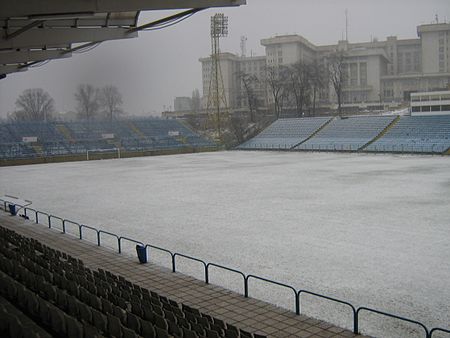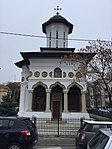Stadionul Cotroceni
Football venues in RomaniaMulti-purpose stadiums in RomaniaRomanian sports venue stubsRugby union stadiums in Romania

Cotroceni Stadium is a football stadium in Bucharest, Romania. It holds 14,542 people. The venue was the home ground of Progresul București. The stadium was built in 1995, being the first stadium built, after the fall of Communism in Romania in 1989.It was the host for the Romanian Cup Final in 2004 and 2005. Also an international rugby union match between France and Romania was played on June 17, 2006, during the 2006 France rugby union tour. At this stadium performed Kylie Minogue, Enrique Iglesias, RBD, Deep Purple, Metallica and Iron Maiden.
Excerpt from the Wikipedia article Stadionul Cotroceni (License: CC BY-SA 3.0, Authors, Images).Stadionul Cotroceni
Strada Alexandru Vitzu Profesor Doctor, Bucharest Uranus
Geographical coordinates (GPS) Address External links Nearby Places Show on map
Geographical coordinates (GPS)
| Latitude | Longitude |
|---|---|
| N 44.427666 ° | E 26.0749555 ° |
Address
Stadionul Cotroceni
Strada Alexandru Vitzu Profesor Doctor
050726 Bucharest, Uranus
Romania
Open on Google Maps








